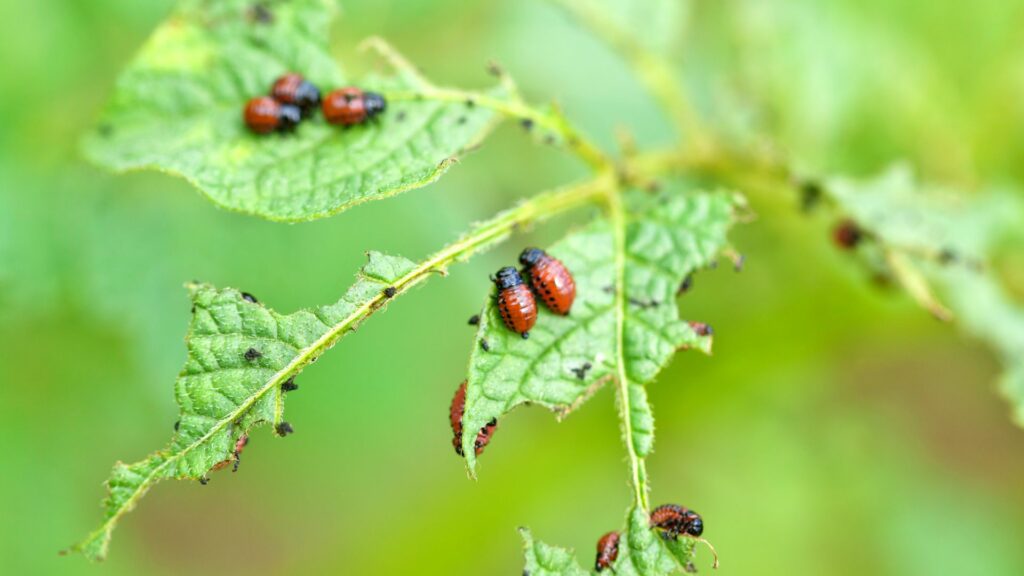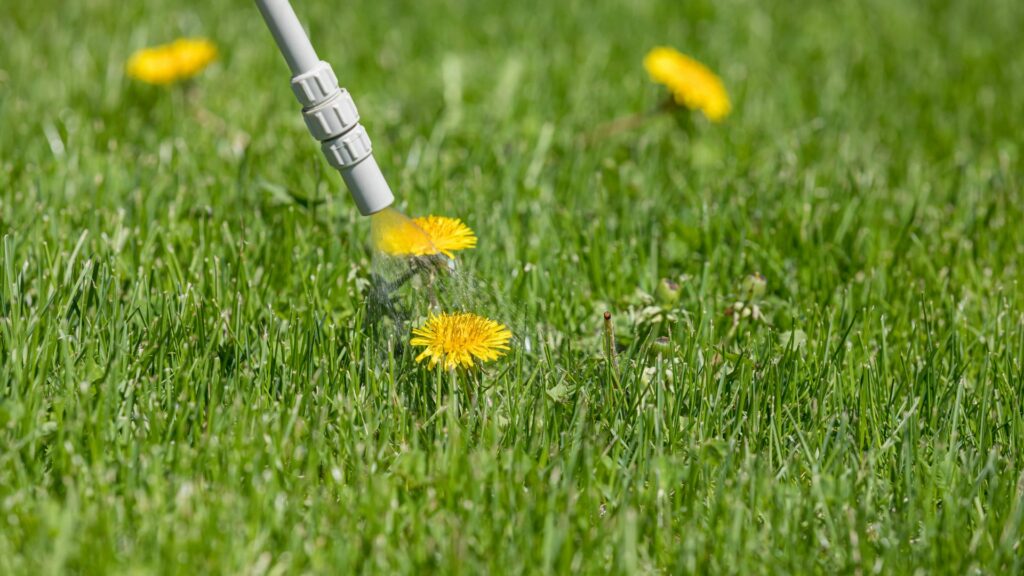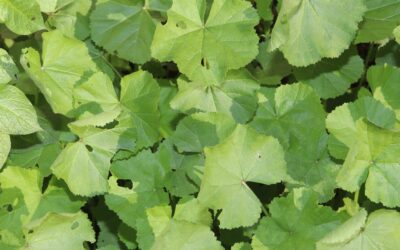Mallow weed is a common problem for commercial facility and property managers, quickly taking over landscapes if not properly controlled. These pesky weeds can be identified by their round, fuzzy leaves and small pink or white flowers. In this ultimate guide, we'll...
Recent Posts
The Landscaper’s Guide To Plant Growth Regulators
Landscapers often struggle with controlling plant sizes and health. Plant Growth Regulators (PGRs) are organic compounds that modify plant growth. This article will guide you in using PGRs to solve common landscaping challenges. Read on for a landscaper's guide to...
The Role of Landscape Maintenance in Enhancing Property Value
You're waiting for potential tenants to arrive at your commercial property for their first viewing. But as you stand in the sunshine, you scan your surroundings and spot a problem. That pathway is cracked. That water fountain isn't working. And when was the last time...
According to recent research by the University of Princeton, lawns account for over 40 million acres of American land today.
Maintaining a lush, green space is more than just a matter of aesthetics; it’s about creating a healthy, sustainable outdoor environment. One of the critical challenges in the quest for green pastures is the battle against pests, which can damage vegetation and compromise the lawn’s integrity.
In this guide, we’ll discuss how lawn pest control contributes toward a healthier overall landscape for your business.
Read on to learn more.
Why Is Lawn Health Important?
Maintaining a clean, pest-free lawn is not just about enhancing your business’s aesthetic appeal. It’s a crucial step towards ensuring a healthy, vibrant outdoor space. With a clean pest free landscape, you’ll enjoy these benefits and more:
Enhanced Outdoor Environment
A clean site, free of lawn pests, invites customers to frequent your establishment. It becomes a safe, welcoming place, devoid of nuisances like insects and rodents that can mar the experience.
Promoting a Healthier Ecosystem
Pest-free lawns contribute to a balanced ecosystem. By preventing the overrun of pests, you protect plant life and provide a habitat for beneficial insects and animals, promoting biodiversity.
Disease Prevention
Pests can be carriers of diseases harmful to both humans and pets. A lawn clear of these pests reduces the risk of disease transmission, creating a safer environment for everyone.
Meet These Common Lawn Pests

Lawn pests can wreak havoc on the health of your green areas. These critters cause a range of problems, including weak growth, unsightly patches, and lackluster vitality.
Different pests target lawns in various ways, depending on the type of pest and the condition of the lawn. Before we can hope to enhance our outdoor spaces, we must understand the creatures that work to undermine them. Let’s take a magnifying glass to some of the most common culprits:
1. Grubs: an Underlying Threat
Grubs, the larvae of beetles, are notorious for damaging lawns from below the surface. They feed on grass roots, leading to yellow patches and weakened grass that can easily be lifted from the soil.
Timely identification and treatment are crucial to prevent widespread damage.
2. Chinch Bugs: Small but Destructive
Unassuming to the eye, these tiny insects can cause significant harm by sucking the sap from grass blades and injecting a toxin that blocks water transport, leading to brown, dead patches in your lawn. Proper lawn care and moisture management are essential to deter chinch bugs.
3. Sod Webworms: A Hidden Menace
As the moon rises, beware the insidious sod webworm. This voracious moth larva feeds by night, targeting your carefully curated garden landscape design. Encouraging natural predators and applying appropriate treatments can help control their population.
4. Armyworms: Leaves for Lunch
Armyworms come in droves. Known for their rapid feeding on grass leaves, an infestation of these Spodoptera insects can cause widespread damage to lawns almost overnight. Monitoring and early intervention are key to managing these pests.
5. Moles: Burrowing Bothers
While not directly harmful to grass, moles dig tunnels in search of grubs and insects, disrupting the lawn’s appearance and causing indirect damage. Managing grub populations can reduce mole activity and curtail the emergence of molehills.
Preventing and controlling these pests involves a combination of good lawn care practices, timely application of treatments, and encouraging the presence of natural predators. Regular monitoring and prompt action at the first sign of trouble can help maintain the health and beauty of your lawn.
Fighting Back: Lawn Pest Control Explained

While insects may be the bane of your business, it doesn’t have to be this way. Employing professional garden landscape design services can draw a line under your pest problem permanently. Here are a few pro methods for eradicating pests and improving overall lawn health:
Pest Management
Professional landscapers come equipped to tackle stubborn pest issues. Methods focus on long-term prevention, using a combination of biological control, mechanical solutions, and even advanced chemical treatments.
By understanding the specific needs of your lawn and the types of pests it attracts, professionals can create a customized plan that minimizes pest populations while prioritizing environmental health.
Aeration and Dethatching
If you’re struggling to pin down lawn pests, soil aeration and dethatching are powerful additions to your arsenal. They improve the health of your lawn and eliminate the hiding spots that lawn pests frequent.
Aeration involves making small holes in the soil to allow air, water, and nutrients to penetrate the grass roots. This process helps the roots grow deeply and produce a stronger, more vigorous lawn. Dethatching removes the thick layer of dead plant material, known as thatch, which can harbor pests and diseases.
By ensuring proper aeration and dethatching, your lawn can breathe easier, absorb more nutrients, and maintain its resilience against pests.
Choosing the Right Plants and Grasses
Selecting the appropriate types of plants and grasses is crucial for pest prevention. Professional landscapers have the expertise to choose species that are naturally resistant to pests and diseases and are well-suited to your local climate and soil conditions.
This strategic selection can significantly reduce the vulnerability of your lawn to pest invasions, making it a key component of effective landscaping.
Chemical Treatments
When chemical interventions are necessary, professionals handle them with care. They aim for targeted application rather than broad-spectrum treatment.
This precision ensures that beneficial organisms in your lawn’s ecosystem are preserved, allowing you to prevent weeds while maintaining the natural balance and preventing future pest outbreaks.
Lawn Maintenance 101: Protect Your Patch
Effective lawn pest control plays a pivotal role in maintaining and enhancing the overall health of your landscape. By addressing pest issues promptly and efficiently, you can prevent damage to your grass, plants, and trees, ensuring they remain vibrant and robust.
This is where our professional lawn pest control services come in. With over 30 years of providing tailored solutions, we can help protect your lawn from pests and diseases, preserving its beauty and vitality.
Contact us today to learn more about our services and how we can help you achieve a lush, healthy lawn.
Lawn Pest Control (FAQs)
What is lawn pest control, and why is it important for maintaining a healthy lawn?
- Lawn pest control involves the management and eradication of pests that can damage or destroy grass, plants, and landscaping elements in outdoor spaces. Pests such as insects, rodents, and invasive plant species can wreak havoc on lawns, leading to brown patches, wilting plants, and unsightly damage. Implementing effective pest control measures is essential for preserving the health and beauty of your lawn and ensuring a thriving outdoor environment.
What types of pests can lawn pest control address, and how are they managed?
- Lawn pest control can address a wide range of pests commonly found in outdoor spaces, including insects like grubs, ants, mosquitoes, and ticks, as well as rodents like mice, voles, and moles. Additionally, invasive plant species and weeds can also be targeted through lawn pest control measures. Pest management techniques may include the use of chemical pesticides, organic treatments, biological controls, habitat modification, and cultural practices tailored to the specific pest species and environmental conditions.
How can I identify signs of pest infestation in my lawn, and when should I seek professional pest control services?
- Signs of pest infestation in your lawn may include visible damage to grass and plants, such as chewed leaves, wilted foliage, brown patches, and irregular patterns of growth. You may also notice signs of pest activity, such as burrows, tunnels, droppings, or evidence of feeding. If you suspect a pest infestation in your lawn, it’s essential to seek professional pest control services promptly to assess the extent of the problem and implement appropriate treatment measures before the infestation worsens.
What are the benefits of professional lawn pest control services?
- Professional lawn pest control services offer several benefits, including expertise in identifying and managing pest infestations, access to specialized equipment and treatments, tailored solutions based on the specific needs of your lawn and landscape, and adherence to safety standards and environmental regulations. Additionally, professional pest control services can save you time and effort by effectively addressing pest problems and preventing future infestations, ultimately preserving the health and beauty of your outdoor space.
How can I prevent pest infestations in my lawn and maintain long-term pest control?
- Preventing pest infestations in your lawn requires a proactive approach that focuses on maintaining a healthy and resilient outdoor environment. This includes practices such as proper lawn care, including regular mowing, watering, and fertilizing, promoting soil health through aeration and soil amendments, selecting pest-resistant plant varieties, practicing proper sanitation to reduce pest habitats, and implementing integrated pest management strategies that emphasize prevention, monitoring, and targeted control measures. Additionally, partnering with a professional lawn care provider can help you develop a customized pest control plan tailored to the specific needs of your lawn and landscape.
Contact Us
"*" indicates required fields
Recent Posts
Mallow Weed Control: The Ultimate Guide
Mallow weed is a common problem for commercial facility and property managers, quickly taking over landscapes if not properly controlled. These pesky weeds can be identified by their round, fuzzy leaves and small pink or white flowers. In this ultimate guide, we'll...
The Landscaper’s Guide To Plant Growth Regulators
Landscapers often struggle with controlling plant sizes and health. Plant Growth Regulators (PGRs) are organic compounds that modify plant growth. This article will guide you in using PGRs to solve common landscaping challenges. Read on for a landscaper's guide to...



